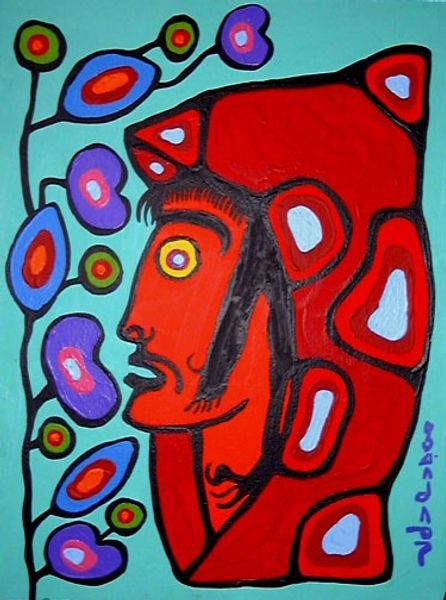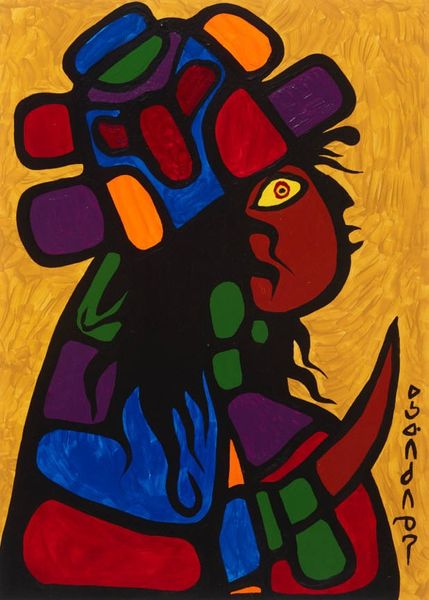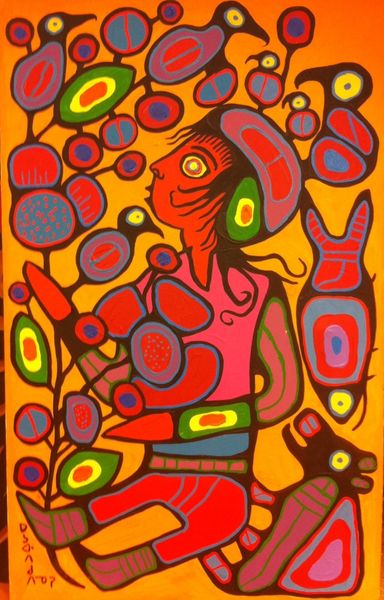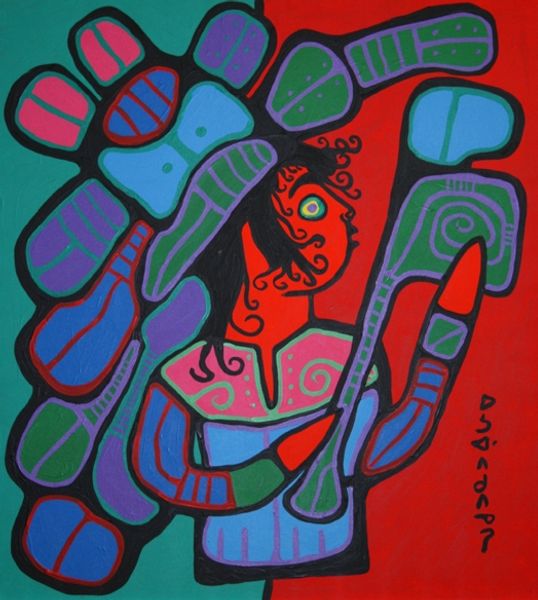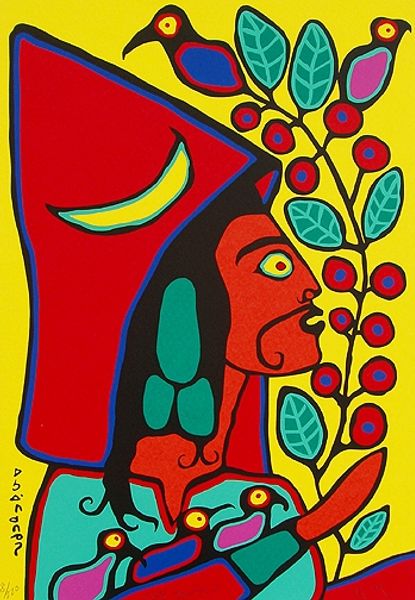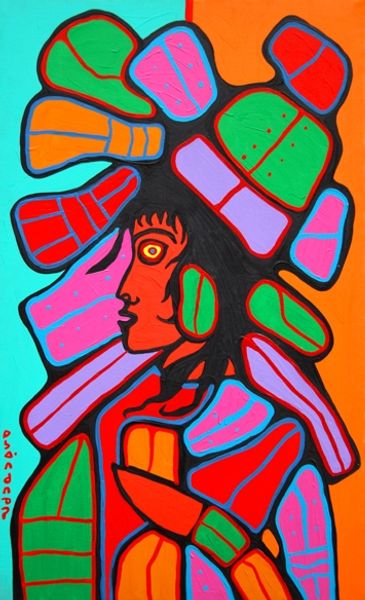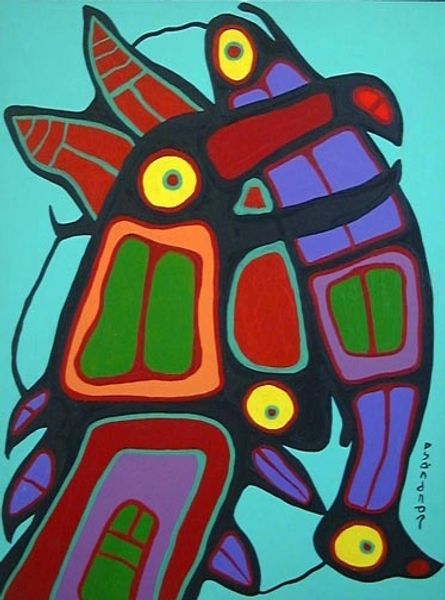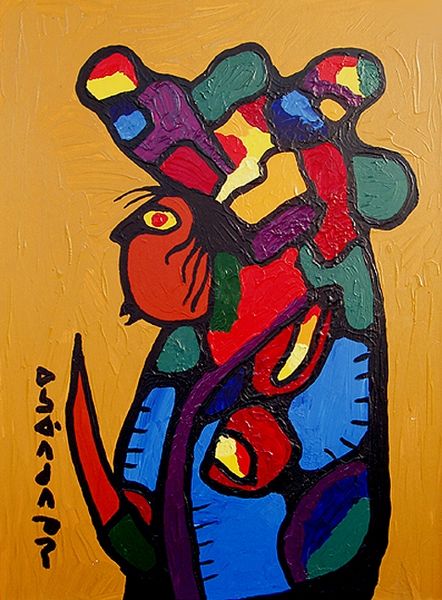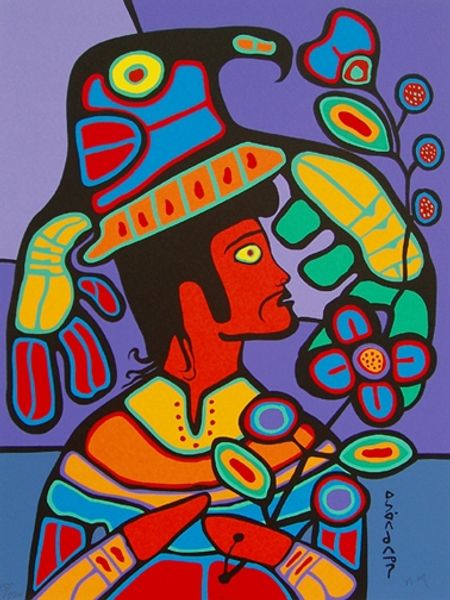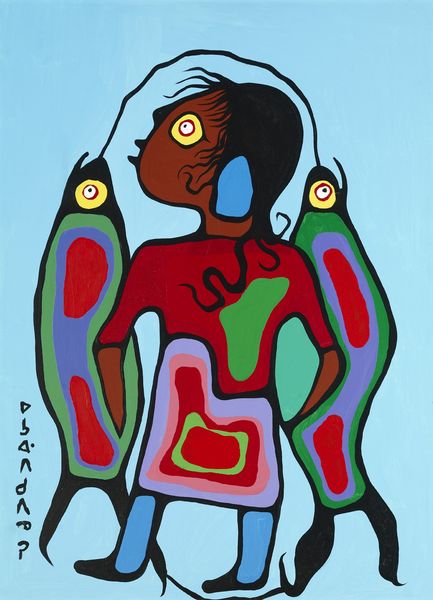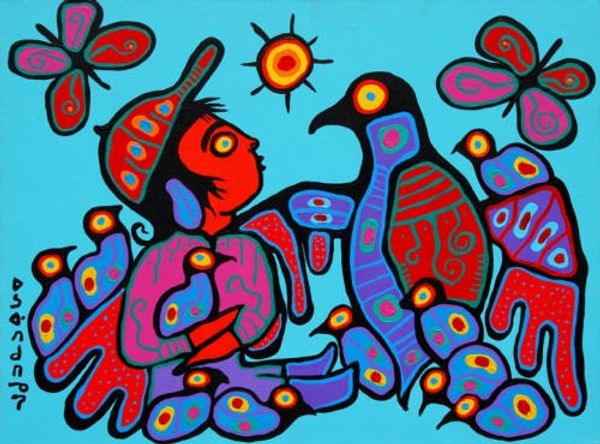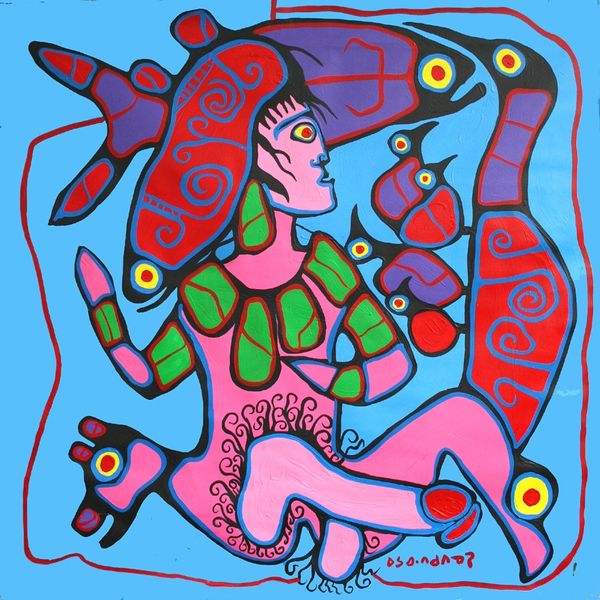
painting, acrylic-paint
#
portrait
#
organic
#
painting
#
graffiti art
#
pop art
#
acrylic-paint
#
figuration
#
indigenous-americas
Copyright: Estate of Norval Morrisseau
Curator: Standing before us is “Man in Headdress,” a vibrant acrylic painting attributed to Norval Morrisseau, though the date is unknown. Its composition features a striking figure against a dual-toned background, half turquoise and half lavender. Editor: Immediately, the eyes are drawn to the bold colors and simplified shapes. There’s almost a sense of Pop Art meeting something far more ancient and…spiritual. The figure is intensely present. Curator: Exactly. Morrisseau, a pivotal figure in Indigenous art, utilized vibrant hues and strong outlines in what became known as the Woodland School style. It's crucial to understand his work within the context of cultural reclamation and the expression of Indigenous identity after periods of intense colonial oppression. Editor: The headdress, in particular, it’s a complex arrangement of shapes that immediately reminded me of bird symbolism. The extended form above definitely resembles a beak and stylized feathers. Can you speak to the meaning these symbols might hold? Curator: That's a fantastic point. Bird imagery is profound in Indigenous cultures. Consider its connection to vision, higher perspective, and a bridge to the spirit world. Morrisseau's art is revolutionary, integrating traditional Anishinaabe spirituality into the contemporary art world, offering a lens through which to interpret complex systems of belief and knowledge production that colonial structures sought to delegitimize. Editor: The face is painted a strong red; the open mouth suggests either singing or speaking. Red can mean so many things cross-culturally – vitality, power, sacrifice. I can't help but see this as an evocation, a speaking to power. Curator: Absolutely, the use of red grounds this figure with a sense of life force. As a political act, Morrisseau’s work counters attempts to silence Indigenous voices, becoming a space of vibrant cultural continuance and self-representation in ways that resist homogenization of Indigenous people under colonial rule. Editor: There's a tension there that grabs the eye, isn't it? A primal kind of visual energy rooted in heritage and speaking loudly from this canvas. Curator: It speaks volumes indeed. I am left thinking of the power of visual art to dismantle the hegemonic gaze.
Comments
No comments
Be the first to comment and join the conversation on the ultimate creative platform.
